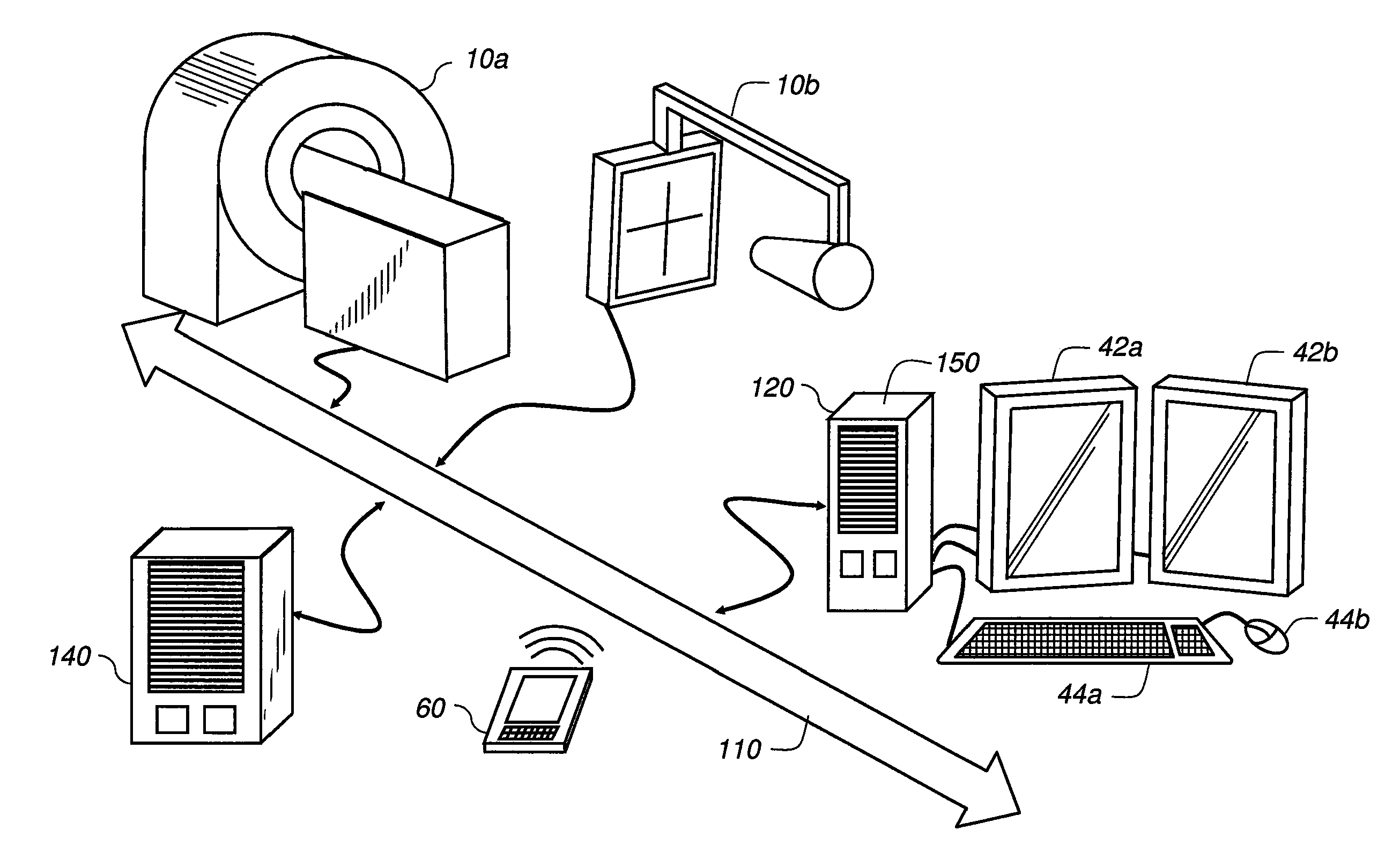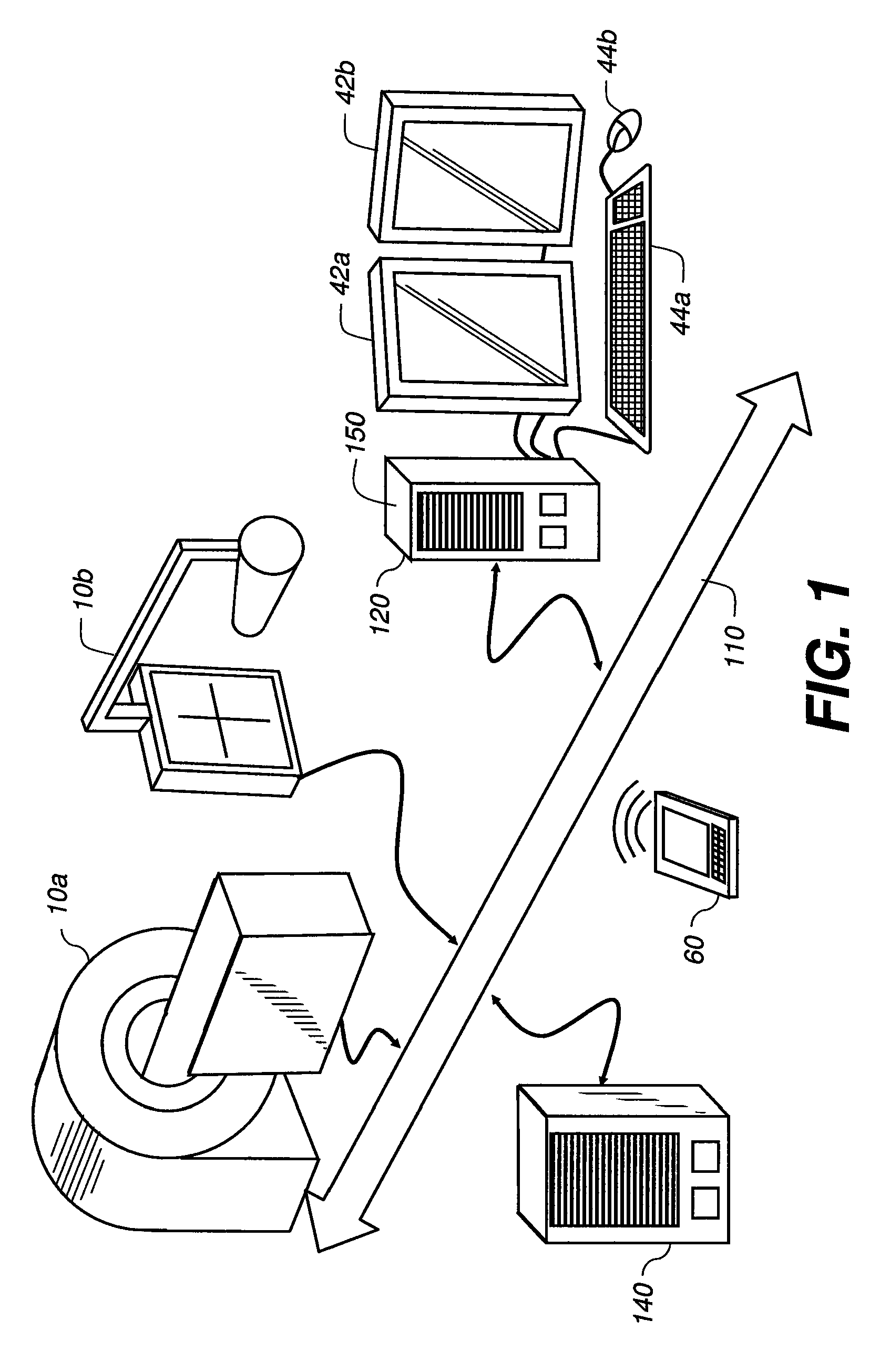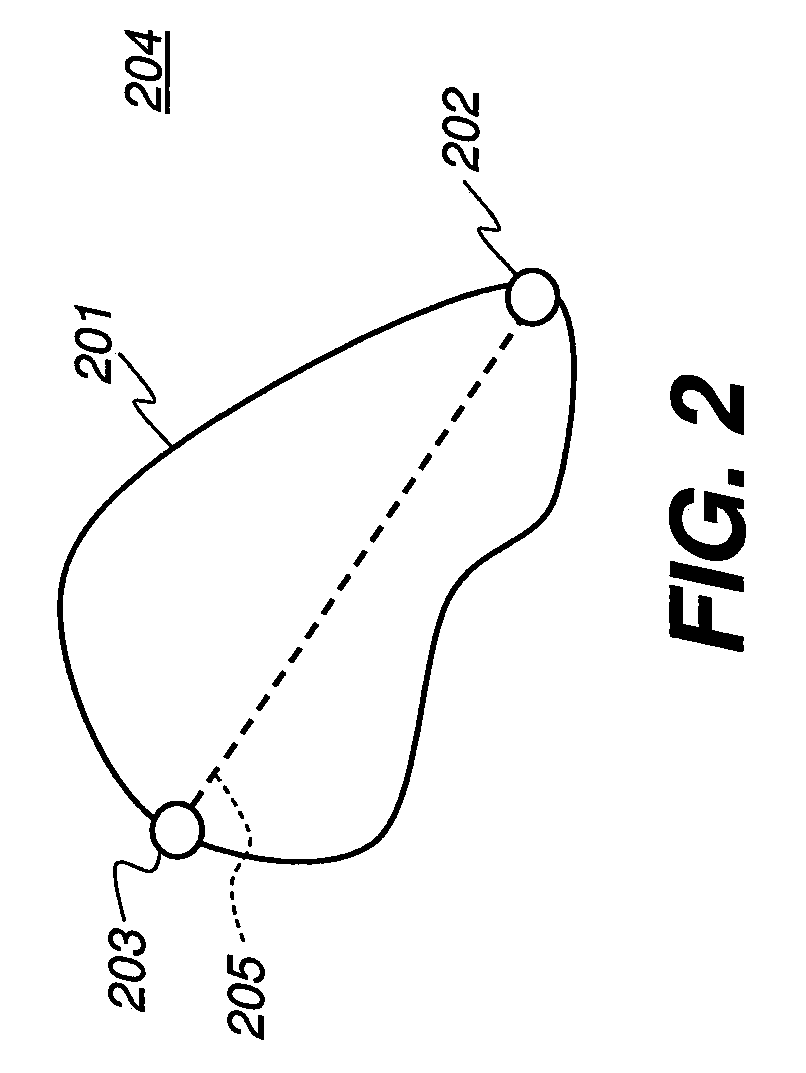Method for interactively determining a bounding surface for segmenting a lesion in a medical image
a technology of medical image and bounding surface, applied in the field of digital imaging, can solve the problems of many voxels that could be easily ignored, unconstrained growth, and additional constraints
- Summary
- Abstract
- Description
- Claims
- Application Information
AI Technical Summary
Problems solved by technology
Method used
Image
Examples
Embodiment Construction
[0024]Exemplary embodiments of the present disclosure provide the operator of a PACS medical imaging diagnostic workstation the ability to segment anatomical regions of interest in digital medical images with a limited amount of input. The input addresses the knowledge of the user to identify the object of interest and to give some rudimentary control over the location, extent, orientation, and shape of the object. The volume of interest generated is compatible with anatomical objects. For example, in an embodiment of the present disclosure, the boundary of the volume of interest may not possess sharp corners or edges. Moreover, the test whether a voxel is interior or exterior to the volume is simple to implement.
[0025]Reference is made to commonly assigned application U.S. Ser. No. 61 / 050,723 (Docket No. 94765), entitled “STATISTICS COLLECTION FOR LESION SEGMENTATION”, provisionally filed on May 6, 2008, the entire disclosure of which is incorporated herein by reference.
[0026]Refer...
PUM
 Login to View More
Login to View More Abstract
Description
Claims
Application Information
 Login to View More
Login to View More - R&D
- Intellectual Property
- Life Sciences
- Materials
- Tech Scout
- Unparalleled Data Quality
- Higher Quality Content
- 60% Fewer Hallucinations
Browse by: Latest US Patents, China's latest patents, Technical Efficacy Thesaurus, Application Domain, Technology Topic, Popular Technical Reports.
© 2025 PatSnap. All rights reserved.Legal|Privacy policy|Modern Slavery Act Transparency Statement|Sitemap|About US| Contact US: help@patsnap.com



